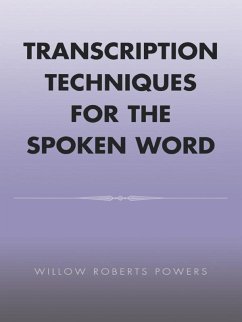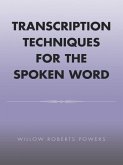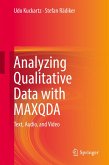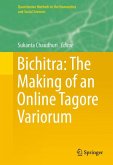This practical handbook tackles what you need to know before, during, and after transcription. Appropriate for varying levels of expertise_and written for transcriptionists, ethnographers, researchers, oral historians, participant observers, and even amateurs who plan to write their family history_this helpful guide by ethnographer Willow Roberts Powers covers a wide range of essential topics: why transcription methodology is essential, factors to be considered before transcribing (including reasons not to create a transcript), stages of transcription and recommended guidelines, methodology, editing, incorporation of contextual information, transcribing performances, and finally the interactions between transcriptionists, participants in the record events, researchers, and other future users of the transcripts. Appendices contain sample forms, lists and discussions of punctuation symbols typically used for notation systems, and sample excerpts from real transcripts
Transcription Techniques for the Spoken Word covers so much more than simply transcription techniques... A fascinating read. For oral historians who do not transcribe and for transcribers who have no more involvement with the particular project from which the physical recording comes outside the physical act of making the transcription, this book will give invaluable insights into the world of the recorder and the world of the transcriber. Oral History Here's a little book I wish I could have used in my classes on ethnographic research...The author reassures me early on that it is a book written by an ethnographer for ethnographers, people who need to get the important content of what somebody tells them...What the book does accomplish for the ethnographer is an answer to the questions of 'what you need to know before, during and after transcription' (p. 6). If you intend to quote informants' speech, here is a good starting place. Journal Of Anthropological Research Willow Powers' book on transcription will be extremely useful to academics and other professionals who are concerned with transcribing the spoken word. The chapters are filled with interesting, concrete examples of problems faced in creating a written record of conversation. The author's extensive experience as anthropologist, archivist, fieldworker and interviewer are apparent on every page as she provides incisive and succinct advice on many relevant topics. -- Patricia Draper, Department of Anthrology and Geography, University of Nebraska, Lincoln









